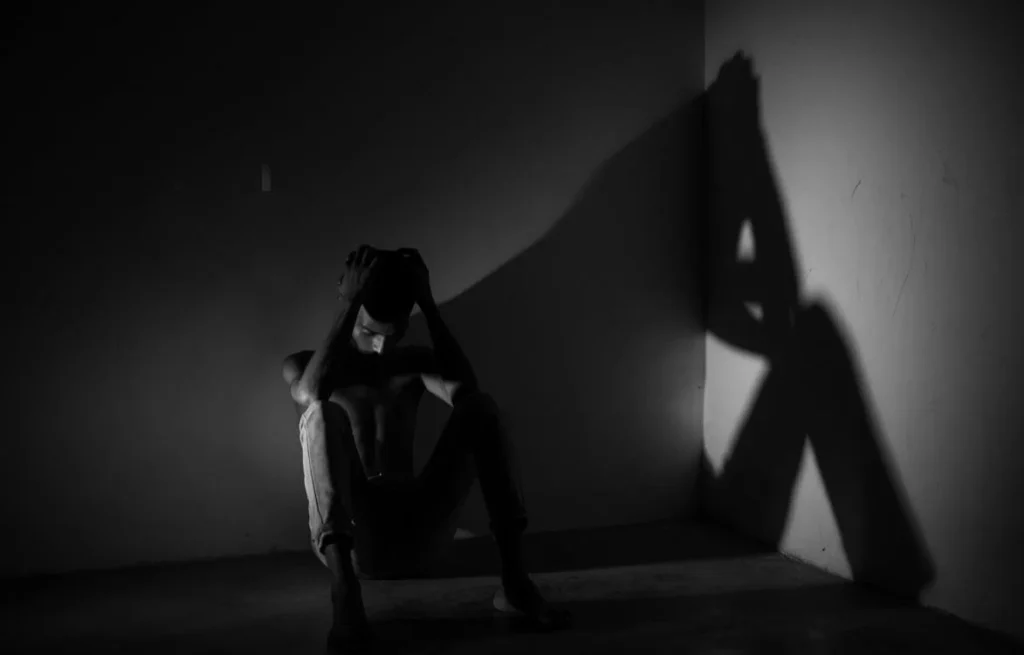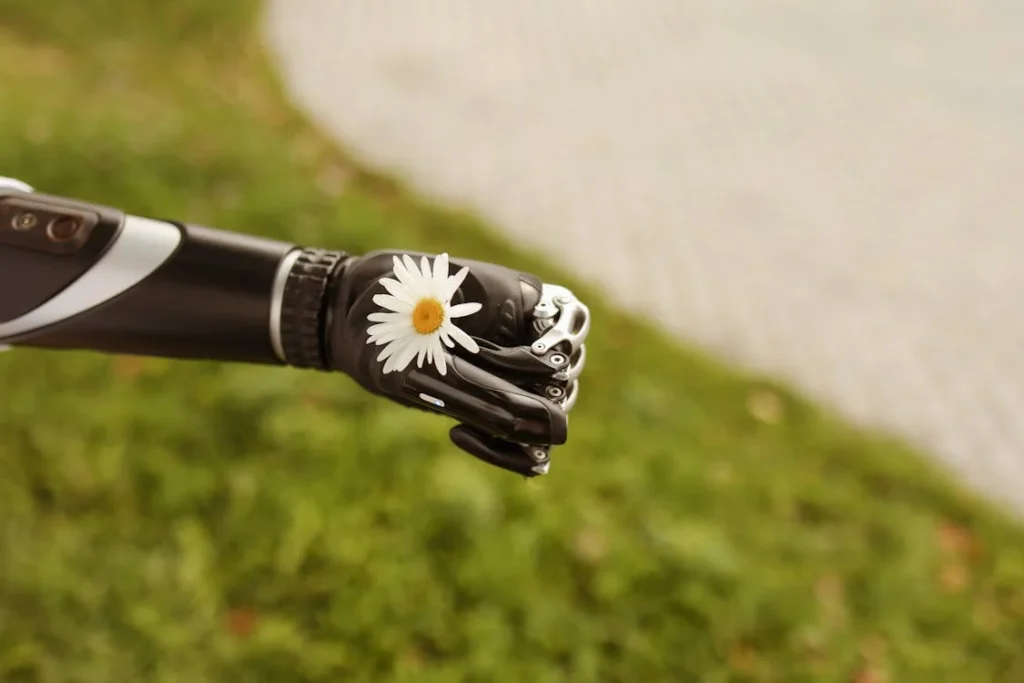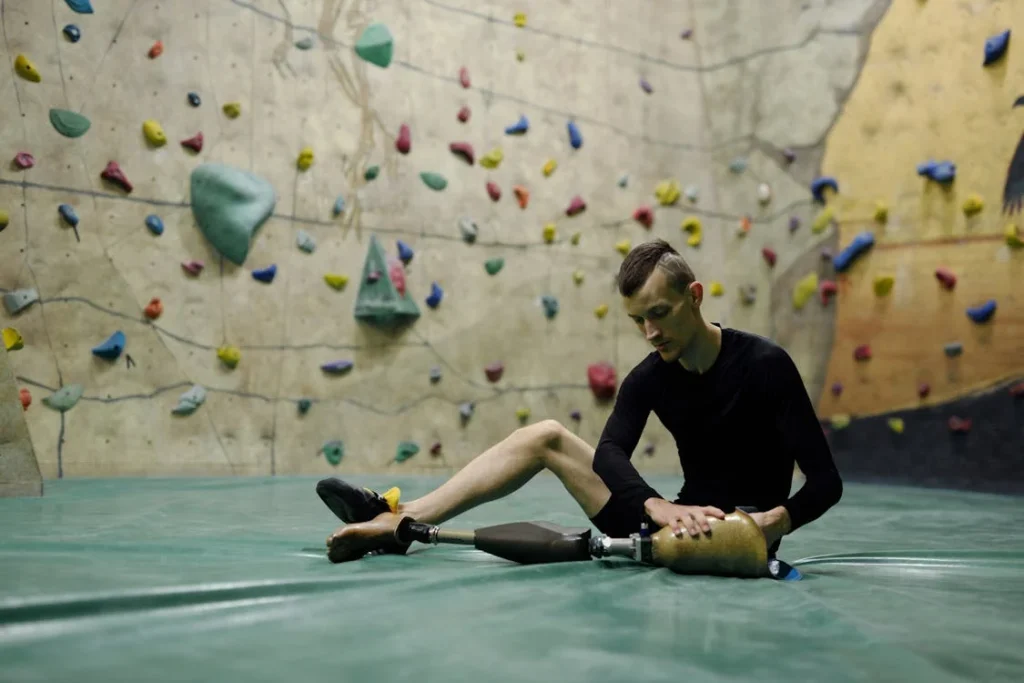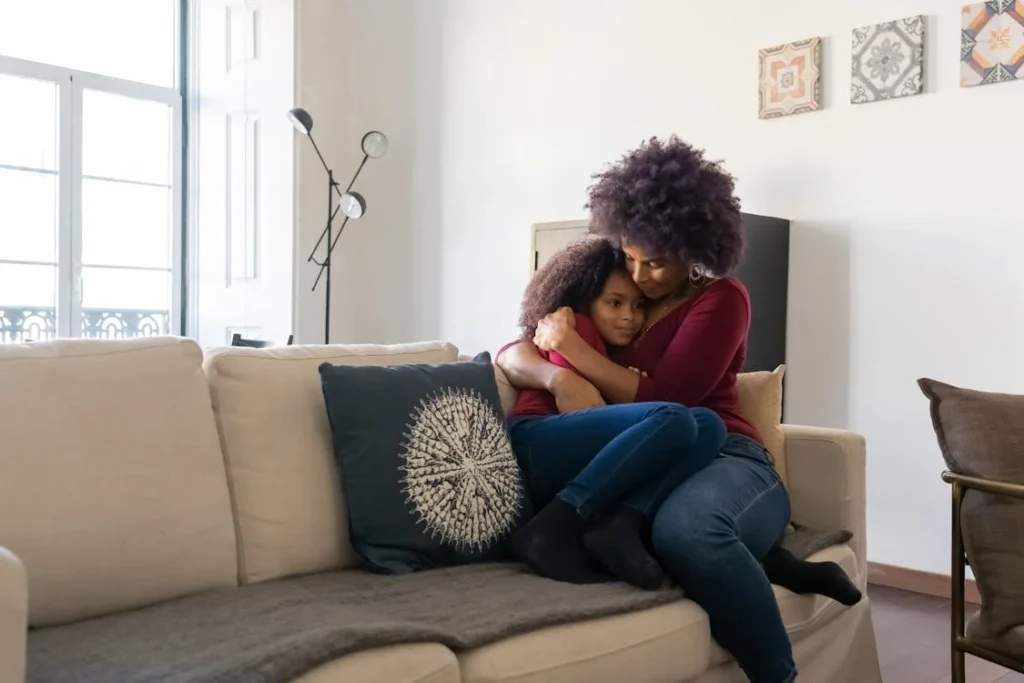When we think about losing a limb, most of us imagine the physical pain first. We think about surgery, rehabilitation, and learning how to walk again with a prosthetic or figuring out how to write without a hand. And while those things are tough—really tough—they’re only part of the story.
What many people don’t talk about is what happens inside. The fear. The flashbacks. The anxiety that sneaks in and stays. The sadness that doesn’t go away. The nightmares. The sudden anger or numbness that makes it feel like you’re not even in your own body.
This is what living with Post-Traumatic Stress Disorder (PTSD) can feel like after a traumatic amputation. It’s an invisible wound that hurts just as much as the visible one—sometimes even more. And it doesn’t always get better just because time passes or the body heals.

Understanding the Hidden Wound: What PTSD Really Is
It’s Not Just in Your Head—It’s in Your Body Too
After a traumatic amputation, most people expect pain. They expect scars, hospital visits, and the long path to physical recovery. But they often don’t expect to wake up sweating in the middle of the night.
They don’t expect to feel their heart race when they hear a loud sound or to suddenly burst into tears without knowing why. That’s because PTSD doesn’t just live in your memories—it lives in your body too.
PTSD happens when the brain keeps reliving a trauma as if it’s still happening, over and over again. Even though the danger is gone, your nervous system acts like you’re still in that moment.
This isn’t weakness or overreacting. It’s your body trying to protect you from something it thinks is still a threat. It’s the way your brain tries to make sense of something it was never prepared to handle.
When someone loses a limb through a violent accident, a war injury, or any sudden trauma, it shakes the entire foundation of how they see the world.
Life suddenly splits into a “before” and an “after.” The mind struggles to connect the dots, to find safety again. That’s why PTSD can feel like you’re stuck in a loop, even when everything around you has changed.
Why Amputation Is Especially Vulnerable to PTSD
Not every traumatic event causes PTSD, but traumatic amputation carries a much higher risk. That’s because it combines physical loss, emotional shock, and sometimes guilt or helplessness. Y
ou may remember the moment it happened in vivid detail, like a movie you can’t stop playing. You may feel like you didn’t have control, or like you should’ve done something different.
If the trauma involved violence, like a car crash or an explosion, your brain gets overwhelmed and stores the memory in pieces, often without a clear timeline.
This makes the flashbacks more intense. You might hear a sound or smell something familiar and suddenly you’re right back in that moment, with no warning.
Your hands get sweaty. Your breathing changes. It’s like the body jumps into action without your permission.
Amputation also changes how you see yourself. Your body is different now. That alone can cause a deep sense of loss—not just for the limb, but for your identity, your independence, and your sense of safety in the world.
When your outer world has changed so drastically, it’s no wonder your inner world feels like it’s falling apart.
The Emotional Rollercoaster Nobody Warns You About
In the weeks and months after an amputation, emotions come in waves. Some days you feel strong, like you’re ready to face the world.
Other days, it’s hard to even get out of bed. That’s not just mood swings. That’s the mind trying to catch up with everything that’s changed.
You might feel angry, especially if the accident was someone else’s fault. You might feel ashamed to ask for help, even when you need it.
Or maybe you find yourself snapping at people you love because you can’t explain what you’re feeling. That’s normal. That doesn’t mean you’re broken—it means you’ve been through something deeply human.
But here’s the hard part. PTSD can convince you that you’re alone in all of this. It tells you that nobody understands, that nobody else is suffering like you are. It pushes people away just when you need them most.
That’s why it’s so important to talk about it, to name it, and to know that healing is possible—even if it feels out of reach right now.

The Day-to-Day Impact of PTSD After Amputation
Waking Up in a Different World
Each morning after a traumatic amputation can feel like waking up in a foreign place. Your surroundings may be the same, but everything feels unfamiliar.
The routines that once seemed easy—getting dressed, walking to the bathroom, brushing your teeth—now feel like challenges you never signed up for.
And layered on top of this physical adjustment is a mental fog that’s harder to explain.
You might wake up anxious without knowing why. Your mind may be filled with thoughts from the accident, memories that won’t leave you alone.
It could be the sound of metal crashing, the look on someone’s face, or the weight of the silence that followed. Sometimes it’s not even the trauma itself that haunts you—it’s the moment you realized everything had changed.
This is what PTSD does. It doesn’t work on a clock. It doesn’t wait for you to be ready. It just shows up, and it shows up in ways that don’t always make sense to other people.
That’s why support from family and friends is so important. But it’s also why people with PTSD often isolate themselves, because they feel like a burden or because it’s too hard to explain something that doesn’t have clear words.
When Normal Things Become Triggers
One of the hardest parts of PTSD is that the world around you can become a minefield of triggers.
You might be walking through a crowded market and suddenly feel overwhelmed by a noise or a smell. Your chest tightens, your throat closes, and before you know it, you’re panicking.
That noise might remind you of the accident. That smell might bring back the hospital. And even if you tell yourself logically that you’re safe, your body won’t listen. It’s already in defense mode.
This can make simple outings feel like major obstacles. It can make you want to stay home, cancel plans, and withdraw from the world.
But the more you pull away, the more isolated you feel—and that’s when PTSD gets stronger. It thrives in silence. It grows in the dark.
PTSD also impacts sleep. Nightmares can become frequent. You might fear going to bed because you’re scared of what you’ll see when you close your eyes. Sleep becomes broken.
You wake up more tired than when you went to bed. This exhaustion makes everything feel worse. Concentration fades. Hope feels distant. And day by day, the weight grows heavier.
How PTSD Affects Relationships
When you lose a limb, it doesn’t just affect you. It affects the people you love, too. Your partner may want to help but doesn’t know how. Your parents may worry constantly.
Your children may not understand what’s happening and ask questions that hurt more than they realize. Your friends might stop calling, not because they don’t care—but because they don’t know what to say.
PTSD can strain even the strongest relationships. You may find yourself saying things you don’t mean or pushing people away because it feels easier than letting them in.
You may feel guilty for the way you’ve changed, even though none of it was your fault. And if you’re in a culture or community where mental health is still seen as a weakness, you might feel even more alone.
But here’s the truth: asking for help is not weakness. Feeling pain is not failure. And telling someone you’re struggling is one of the bravest things you can do.
You don’t have to explain every detail. You don’t have to pretend to be okay when you’re not. You just have to let someone in, even a little.
That could be a friend, a family member, or a counselor. Just one person who sees you—not just the scar, but the soul behind it.
Getting Back to Work and Facing the World Again
Returning to work after an amputation and with PTSD is another mountain to climb. It’s not just about physical adjustments or accessibility.
It’s about walking into a world that doesn’t know what you’ve been through and trying to fit in again.
Maybe you were the go-getter in your office, always sharp, always on top of your game. Now, you might struggle with focus or feel overwhelmed by tasks that used to be simple.
You might feel self-conscious about your prosthetic or anxious that someone will say something that triggers a memory. Or you may just feel like you’re not “you” anymore—and that’s a terrifying thought.
But the good news is that workplaces are changing. Awareness about trauma, inclusion, and mental health is growing. More companies are open to adjustments.
You can advocate for what you need—whether it’s flexible hours, a quieter workspace, or even just a little time. And if you’re not ready to go back just yet, that’s okay too. Healing isn’t a race.
Remember, your value isn’t just in your productivity. It’s in your perspective, your experience, and your courage to show up, even when it’s hard. That’s something no title or job description can measure.

The Road to Healing: Starting the Journey with PTSD
The First Step Is Naming It
The hardest part of PTSD is that it can go unrecognized for a long time. People around you might think you’re just moody or depressed. You might think you’re just having a hard time adjusting.
But when you can’t sleep, when your heart races at small sounds, when you can’t stop thinking about the trauma or avoid anything that reminds you of it—it’s not just stress. It’s PTSD.
Naming it doesn’t mean you’re broken. It means you understand what you’re facing. It means you can stop blaming yourself and start looking at the real problem.
You wouldn’t ignore a broken bone, right? Then why ignore a broken heart or a mind in pain?
There’s strength in naming it. It gives you power. It gives you direction. And it allows you to find the right kind of help instead of wasting time wondering why you feel the way you do.
Therapy Isn’t Weakness—It’s a Tool
Let’s be honest. Therapy still carries a stigma in many parts of the world, especially in places where people are expected to “tough it out” or keep problems within the family.
But PTSD is not something you can think your way out of. It’s not about positive thinking or ignoring your pain. It’s about facing something that overwhelmed you—and doing it in a safe, guided way.
Good therapy gives you tools. It helps you break the cycle of flashbacks and panic. It helps you tell your story in a way that brings you peace instead of pain.
It teaches your brain that the danger is over, and that it’s okay to breathe again.
You don’t need to lie on a couch and talk about your childhood if that’s not what you need. You can find therapists who specialize in trauma, who understand what it’s like to live with PTSD after physical injury.
Some use methods like EMDR, which helps reprocess traumatic memories. Others use talk therapy, cognitive behavioral therapy, or even art and movement.
The goal isn’t to erase the past—it’s to stop it from controlling your present.
Medication Can Help You Stabilize
Not everyone with PTSD needs medication. But for some, it can be life-changing. When your body is in a constant state of alarm, it’s exhausting.
You can’t think clearly, rest properly, or make decisions. Medication can help slow the storm down long enough for therapy to work.
It doesn’t numb you or turn you into someone else. It gives your nervous system a break so you can start healing from a place of strength rather than survival.
Always work with a doctor who understands trauma. Never try to medicate yourself or stop medication suddenly. This part of the journey needs care and patience.
You deserve a mind that feels safe again. Sometimes, medication is part of the bridge that gets you there.
Community Makes the Load Lighter
There’s a reason so many people say “I thought I was the only one” when they join a support group. PTSD makes you feel alone.
But you are not alone. There are people out there who’ve walked this road, who understand the silence, the anger, the fear.
Whether it’s in person or online, support groups can be life-giving. It’s not about complaining or reliving the trauma. It’s about having a space where you don’t have to explain everything.
A space where you can just be. You’ll learn from others, laugh together, cry together, and realize that healing doesn’t have to be lonely.
Your story matters. Sharing it might just help someone else start their own journey too.
Reclaiming Control Through Small Wins
One of the most damaging things PTSD does is steal your sense of control. You feel like the trauma controls your mind, your emotions, your body.
One of the most powerful ways to heal is to take that control back—slowly, gently, and consistently.
Start with the small stuff. Maybe it’s setting a routine again. Maybe it’s walking down the street that used to scare you. Maybe it’s going back to your favorite place and letting yourself feel whatever comes up.
These small wins are not small at all. They are signs that you’re moving forward. Each one tells your brain, “I’m safe now.”
Over time, those messages sink in. And slowly, you start feeling like yourself again—or maybe even a stronger, wiser version of who you were.
Healing isn’t a straight line. There will be good days and hard days. But the more you show up for yourself, the more the fear loses its power.

Life After Trauma: Redefining Who You Are
You Are Not Just What You Lost
One of the quiet battles of recovering from a traumatic amputation is redefining identity. When you lose a limb, it can feel like you’ve lost a part of who you are.
Maybe you were a runner, a dancer, a mechanic, a soldier—or just someone who didn’t have to think twice about climbing stairs or holding your child’s hand.
That’s what loss does. It doesn’t only take away the physical. It shakes up your image of yourself.
But healing from PTSD and from amputation means learning that you are not just what you lost. You are what you still have.
You are your voice, your memories, your values, your dreams. You are your determination, your humor, your intelligence. Those things didn’t go away—they might have just been buried for a while under pain and grief.
The real work lies in reconnecting with those parts of you. And that’s not always about bouncing back to who you were before.
Sometimes, it’s about discovering someone new inside of you—someone who has weathered something impossible and is still standing. That strength is real. And it deserves to be seen.
The Role of Prosthetics in Emotional Recovery
At Robobionics, we understand that a prosthetic limb is not just a device. It’s part of your healing. It’s not just about helping you walk or hold a cup again. It’s about helping you reclaim your life, your confidence, and your sense of normalcy.
When someone first tries on a prosthetic, there’s often a mix of excitement and fear. It might feel strange or even frustrating.
You might worry about how people will look at you. But over time, it can become a source of strength. It becomes a symbol—not of weakness, but of resilience.
That’s why we design prosthetics that don’t just function well but feel personal. Whether it’s something sleek and discreet or bold and expressive, your prosthetic should reflect who you are.
It should support you not only in movement but in confidence.
We’ve seen people cry tears of joy when they take their first steps again, when they ride a bike, or even when they cook for their family without help. These moments matter.
They’re not just about mobility—they’re about emotional victories. And they remind you that your story is still unfolding.
Finding Joy Again, Slowly But Surely
PTSD has a way of stealing joy. It makes the world feel gray and flat. Things that once made you laugh or feel alive suddenly feel far away, like they belong to someone else’s life.
You might feel guilty for even thinking about being happy again. But here’s the truth: you are allowed to feel joy. You are allowed to laugh, to dance, to love. Joy doesn’t erase the pain. It sits beside it.
Finding joy again doesn’t mean forcing a smile. It means noticing small things that feel good—sun on your skin, your favorite song, the smell of your morning tea. At first, these moments might feel fleeting or even undeserved. But they add up.
Over time, those little sparks become part of your days again. And one day, without realizing it, you might find yourself laughing without holding back. That moment will not mean you’re fully healed. It will simply mean you’re living.
Give yourself permission to feel joy. It’s not a betrayal of your pain—it’s proof that you’re bigger than it.
Connecting with Others Through Shared Experience
One of the most beautiful parts of healing is realizing how many others are walking a similar road. People who have also faced traumatic amputation.
People who have also felt afraid, angry, confused, or broken. When you meet them, there’s often a quiet understanding. No need for long explanations. Just a nod, a look, a shared silence that says, “I get it.”
These connections can be life-changing. They remind you that you’re not the only one trying to figure this out. They show you what’s possible.
Maybe you meet someone further along in their journey, and their strength gives you hope. Maybe you share your own story, and someone else finds courage in your words.
Support groups, social media communities, and even rehab centers can offer these chances to connect. You don’t have to be loud about it.
You just have to be open to the idea that someone out there understands—and that together, you’re stronger.
No one should have to face PTSD alone. Connection is medicine. It might not take away the pain, but it makes the weight lighter.
Rebuilding Your Future on New Terms
After a traumatic event, it’s common to feel like your future has been stolen. Maybe you had plans—a job, a trip, a family event—and now it all feels too uncertain. But the truth is, your future isn’t gone. It’s just changed.
Rebuilding your future after PTSD and amputation means creating it on your own terms. You get to decide what matters now.
Maybe it’s a career change, a new hobby, or starting your own support blog. Maybe it’s simply being present with your loved ones in a deeper, more meaningful way.
It doesn’t have to be big or impressive. It just has to feel true to you.
And yes, there will be hard days. There will be days when grief creeps back in, when fear feels loud again. But there will also be moments when you surprise yourself—when you realize how far you’ve come.
Those moments are your guideposts. They are proof that healing isn’t just possible—it’s already happening.

When the Body Remembers: The Role of Somatic Healing in PTSD Recovery
Trauma Doesn’t Just Live in the Mind—It Lives in the Body
Long after the physical wounds have healed and the stitches are gone, trauma can still linger deep within the body. It’s not just a mental loop—it’s a physical imprint.
You may have heard phrases like “muscle memory” or “gut feeling,” but when it comes to trauma, the body often remembers what the mind wants to forget.
After a traumatic amputation, your nervous system can become stuck in survival mode. Even if you’re no longer in danger, your body continues to react as if the trauma is still happening.
That might look like clenched muscles, shallow breathing, tightness in the chest, or even a frozen feeling where your body just shuts down in response to stress.
These aren’t random reactions. They’re your body’s way of trying to stay safe—even when safety has already returned.
This is why traditional talk therapy, while incredibly helpful, may not be enough on its own. The body needs its own way to heal. That’s where somatic practices come in.
What Is Somatic Healing, and Why Does It Matter?
“Somatic” simply means “of the body.” Somatic healing is a therapeutic approach that helps people reconnect with their bodies in a safe, gradual, and empowering way.
The idea is that trauma causes a split between mind and body—your brain says one thing, but your body keeps reacting to the past. Somatic therapy brings those two parts back into conversation.
Unlike traditional therapy, which focuses on talking through your experience, somatic therapy might involve noticing how your body feels when you talk about something difficult.
It might include very gentle movement, grounding techniques, or breathing exercises that help calm your nervous system.
It might guide you to tune in to your heartbeat, your breath, or the sensations in your muscles—things we often ignore or shut off after trauma.
For someone who’s gone through a traumatic amputation, this can be a game-changer. Because not only are you grieving and processing the trauma, but your entire sense of body awareness has changed.
Your brain has to relearn its relationship with your new physical reality. Somatic healing can make that process smoother, kinder, and more complete.
Reclaiming Safety Within Your Own Skin
One of the most devastating parts of PTSD is that you stop feeling safe inside your own body. You might feel like your body betrayed you.
Or that it carries reminders you’d rather forget. This disconnect can make you feel numb or constantly anxious, like your body isn’t yours anymore.
Somatic healing helps you gently rebuild that relationship. It teaches you that your body is not the enemy—it’s the place where healing begins.
You start by simply noticing your breath, your posture, or the way you hold tension. No judgment. Just curiosity.
In time, this awareness allows you to make choices instead of reacting automatically. You learn how to relax your shoulders when you’re stressed.
You realize when your breath becomes shallow and bring it back to a steady rhythm. You notice when your stomach knots and ask yourself what’s going on emotionally.
These moments of awareness add up. They bring you back into the present. They show you that you have control again—maybe not over the past, but over how you feel in this moment. That’s a powerful shift.
Integrating Movement Into the Healing Process
For many trauma survivors, especially amputees, movement becomes a sensitive subject. It’s tied to loss, to struggle, to hard memories. But movement is also one of the most direct paths to emotional release.
Our bodies hold onto things we don’t even realize. Tension from trauma often sits in the hips, the neck, the jaw, the shoulders.
When we move with intention—whether through physical therapy, gentle yoga, or even mindful walking—we start to let that tension go.
Movement doesn’t have to be intense or structured. It can be as simple as swaying to music, stretching in your chair, or rolling your shoulders back and forth. It’s not about fitness. It’s about freedom.
And for amputees, movement with a prosthetic can be part of this healing. When you learn to trust your body again—to balance, to reach, to stand tall—you’re not just gaining function.
You’re rebuilding confidence. You’re telling your brain, “This body is still strong. This body can still move.”
The more you move, the more you feel. And the more you feel, the more alive you become. That’s healing.
Breathing Through the Storm
It sounds simple, but one of the most overlooked parts of trauma recovery is breathing. When we’re anxious or triggered, we breathe fast and shallow.
When we’re afraid, we might hold our breath without realizing. Over time, this tells our brain that danger is always near—even when it’s not.
Breathing exercises are one of the fastest ways to calm the nervous system. Deep, slow, belly breathing tells your body that it’s safe now.
You can use it when a flashback hits, when you feel panic rising, or even just when you wake up feeling heavy.
There’s no fancy method required. Just inhale slowly through your nose. Let your belly rise. Then exhale gently through your mouth. Do it a few times. Notice how your body feels. That’s it. That’s how you start coming home to yourself.
Breath is always with you. It’s your anchor. And the more you use it intentionally, the more your body learns that it’s okay to let go of fear.

Beyond the Pain: Culture, Silence, and the Invisible Struggles in PTSD
The Unspoken Rules Around Strength
In many parts of the world, especially in India, there’s a deeply rooted idea that strength means silence. That to be “strong” is to carry pain quietly. To not talk about your feelings.
To accept what has happened and move on without complaining. These beliefs can be powerful—but also damaging.
After a traumatic amputation, people often hear well-meaning but dismissive words. “Be strong.” “What’s done is done.” “At least you’re alive.”
And while these phrases are meant to comfort, they can unintentionally shut down the very conversations that need to happen.
PTSD doesn’t respond to silence. It feeds off it. When you’re told not to cry, not to talk, not to feel—you push those emotions deep inside.
But they don’t disappear. They turn into sleepless nights, panic attacks, sudden anger, and deep sadness that you don’t understand. That’s how unspoken pain becomes invisible suffering.
Real strength is not the absence of emotion. Real strength is facing the hardest parts of yourself and asking for help when you need it.
When Shame Hides the Wound
There’s another word that hangs heavy over PTSD: shame. Some survivors feel ashamed that they “can’t get over it,” even though the trauma happened months or years ago.
Others feel embarrassed about crying or panicking, as if it makes them less manly or less capable. And still others worry that people will think they’re mentally unstable or weak.
This shame is made worse by cultural stigma. In many families and communities, mental health is still taboo.
People avoid therapy because they’re afraid of being judged. They keep their struggles to themselves because they don’t want to be seen as “crazy.”
But PTSD is not madness. It’s not weakness. It’s a normal response to an abnormal experience. And when we keep it hidden out of shame, we only give it more power.
Talking about it, even with just one person, can begin to break that shame. It’s not about having all the answers. It’s about refusing to carry the weight alone.
The Pressure to “Be Normal” Again
After an amputation, people often feel enormous pressure to “go back to normal.” Family, friends, even coworkers may expect them to bounce back quickly—to return to work, to smile more, to be the person they were before.
But trauma changes you. So does loss. And PTSD adds another layer. When you’re fighting internal battles while trying to act “normal” on the outside, it creates even more stress.
You’re not just managing your recovery—you’re performing for the world. That performance is exhausting.
It’s okay to not be who you were before. You don’t owe anyone your old self. What you owe yourself is space to heal. If people don’t understand that, it’s not your job to convince them. It’s your job to protect your recovery.
Recovery isn’t about pretending everything’s okay. It’s about being honest when it’s not—and taking the time you need without guilt.
How Family Can Be Both a Support and a Struggle
In Indian culture, family is everything. It’s our source of love, strength, and identity. But after trauma, family dynamics can become complicated.
Some family members may be incredibly supportive, helping with physical care, encouraging you, standing by you.
Others may not understand what PTSD is. They might expect you to be “back to normal” and unintentionally say things that hurt more than help.
Sometimes, family members avoid talking about the trauma altogether. They want to protect you, so they change the subject or act like nothing happened.
Other times, they try to “fix” your emotions with advice instead of listening.
This can leave you feeling emotionally alone even when you’re surrounded by people. It’s confusing. And it’s painful.
What helps is setting small boundaries. You don’t have to explain everything. You can simply say, “I’m having a hard day,” or “I need some quiet,” or “I’m working through this.”
Teaching your family how to support you might take time, but it can lead to deeper understanding. And if that’s not possible with everyone, try to find one person—a cousin, a friend, a sibling—who gets it. Let that be your lifeline.
You are allowed to seek support outside your family too. A therapist, a peer, or even a support group can offer the kind of understanding that makes healing possible.
Breaking the Cycle of Silence for the Next Generation
One of the most powerful reasons to talk about PTSD and trauma is this: when we speak, we break the cycle for those who come after us.
When children grow up in a home where pain is hidden and emotions are shamed, they learn to do the same.
But when they see a parent, uncle, aunt, or grandparent openly seeking help, talking about hard things, and healing out loud—it changes them. It gives them permission to do the same.
By facing your trauma, you’re not just healing yourself. You’re setting a new example. You’re teaching your children and your community that mental health matters.
That pain is nothing to be ashamed of. That asking for help is not weakness—it’s wisdom.
In a culture where silence has long been the norm, your voice can be the beginning of something new.
Conclusion
Trauma doesn’t end when the wound closes. For many, the real battle begins after—the battle inside. PTSD after a traumatic amputation is real, painful, and often invisible. But it is not the end of your story. You are not just a body that was changed—you are a whole person who is still here, still breathing, still capable of healing.
There is no shame in what you’re feeling. You don’t have to carry it alone, and you don’t have to “be strong” in silence. There is help, there is support, and there is hope. With the right care—mental, emotional, physical—you can rebuild not just your mobility, but your sense of self, your peace, and your future.
At Robobionics, we don’t just make prosthetics. We stand with you through the journey, every step of the way. Because healing isn’t just about walking again. It’s about learning to live again—with courage, with dignity, and with the belief that life after trauma can still be beautiful.
You are not alone. And your story is far from over.



